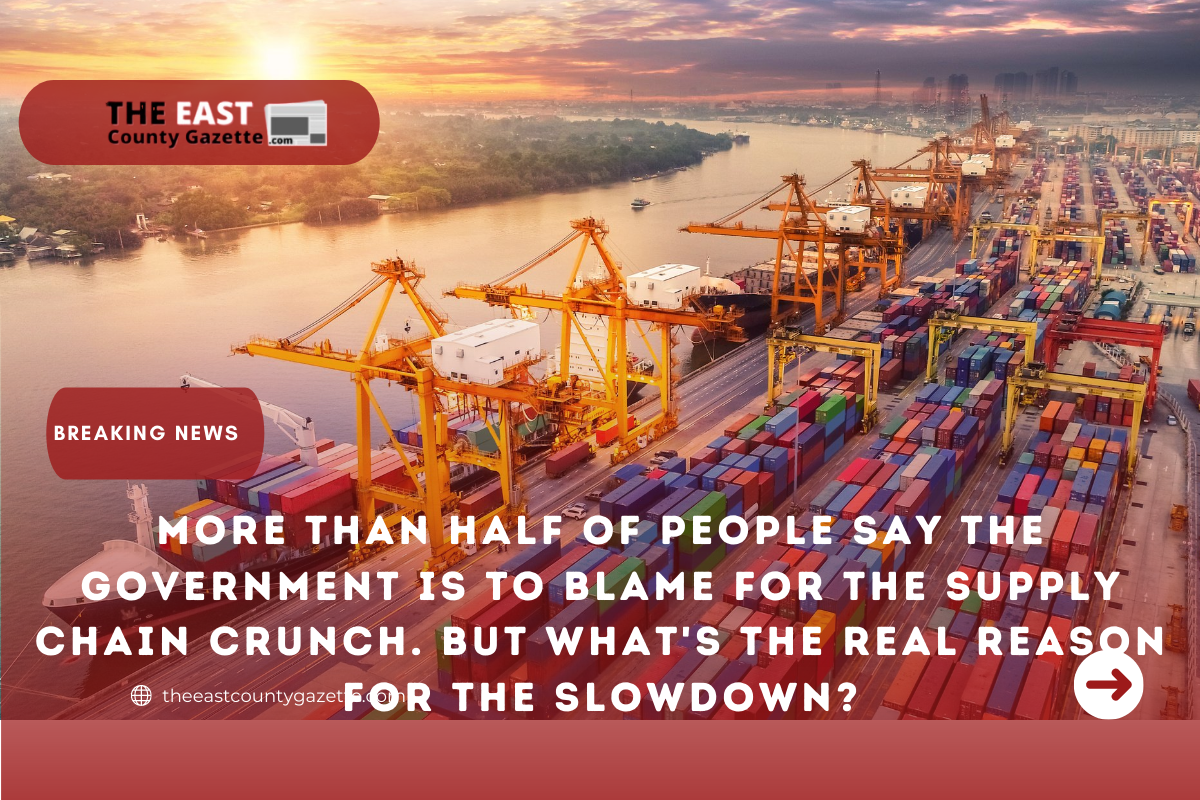Many Americans are increasingly blaming shipping businesses and the federal government for their inability to obtain the things they desire, despite signs that product shortages and delivery delays are finally subsiding.
According to a study of 2,200 customers conducted by Morning Consult last month and published Thursday, around 58 percent of consumers believe shipping and logistics corporations are responsible for the current supply chain bottlenecks that have resulted in shortages.
However, nearly as many Americans, or 55%, hold the government responsible.
In reality, supply chains are complicated and, in many cases, global in scope—which means that when anything goes wrong, there is rarely a single organization to blame.
Read More: Get a Car Insurance Stimulus Check: $400 refunds are arriving in millions of drivers
The Biden administration has taken a number of steps this year to assist in the resolution of supply chain issues, including keeping ports open 24 hours a day, meeting with business leaders, and even supporting a National Guard deployment to help alleviate trucking shortages (although the White House later stated that it was not actively pursuing this option at the time).
According to industry experts, the current supply chain issues are the result of a perfect storm of pent-up consumer demand that was unleashed before the impacts of the epidemic had fully subsided.
Distinguished scholar at the Council on Foreign Relations Michael Spence writes: “As demand grew, pandemic-related interruptions continued to wreak havoc on major ports and manufacturing sites, reducing the ability of suppliers to respond.”
Numerous Americans went on a shopping binge to purchase electronics, home workout equipment, and musical instruments when the pandemic was in full swing. Moreover, they have maintained their expenditures even after vaccines became widely available.
Many industries throughout the supply chain—including manufacturing, shipping, and transportation as well as retail—were coping with COVID outbreaks, personnel shortages, transit bottlenecks, and escalating costs.
In order to keep up with demand, manufacturers eventually increased production, putting additional strain on the companies responsible for shipping raw materials. At the same time, shipping containers became limited, and finished goods began to accumulate on the shelves.
After that, transportation prices skyrocketed. According to the Council on Foreign Relations, the cost of shipping a container from China to the United States reached $20,000 in September, compared to just $1,500 in February 2020.
Overall, the increase in consumer spending had a domino effect that caused the system to get congested and slowed down.
In addition to the pandemic, firms’ emphasis on cost-cutting practices such as lean manufacturing and just-in-time inventories undoubtedly played a role in the rise in healthcare expenditures.
In order to implement these strategies, organizations must retain less inventory, which might result in supply shortages if demand surges or if there are supply chain concerns in place.
Read More: South Dakota Governor Looking Forward to Ban Transgender Girls and Women from Female Sports
It also didn’t help that some shipping businesses, anticipating a dip in consumer demand at the start of the epidemic, altered their schedules to accommodate it.
Alternatively, it could be that some countries and governments have imposed limits in order to contain COVID-19 outbreaks, which have a negative impact on industry and transportation.
Inflation rates in the United States have risen, according to economists, as a result of these ongoing challenges. According to the most recent consumer price index, the cost of consumer goods and services in the United States increased by 6.8 percent over the previous year.
However, there is some good news on the horizon. Despite predictions to the contrary, supply chain restrictions are expected to persist in some form or another into the first half of next year, before easing in the second half.
According to a survey released last week by credit insurance company Euler Hermes, global supply chain disruptions will continue to be severe until the second half of 2022, but the company forecasts global trade to expand by 5.4 percent in 2019.
The significance of Omicron and any subsequent COVID-19 variants, some of which are predicted to be vaccine-resistant, is still up in the air, as is the likelihood of a resurgence.
Jerome Powell, chairman of the Federal Reserve, warned on Wednesday that there is “a great deal of uncertainty.” I’m curious as to what the economic consequences will be. The extent to which it reduces demand as opposed to supplying will be determined by this factor.”
According to Powell, current research indicates that vaccines and boosters are effective against existing COVID variations and that the greater the number of people who are vaccinated, the lesser the economic impact.
However, this does not rule out the possibility of economic ramifications. « Delta had the effect of delaying hiring, and it had a real impact on global supply chains, » says the economist.
Read More: Dems Face Multiple Hurdles Such as Joe Manchin, When It Comes to the Social Spending Bill
As a result, the task of figuring out how global supply networks work was hampered. As a result, [Omicron] has the potential to have an economic impact. “I just believe that at this moment, we don’t know too much,” Powell stated.

